Buildings
Several houses in the village have historical interest. Royal Spring, formally an inn, was named by Charles I in 1642 after the battle of Powick Bridge near Worcester.
Brook House

Brook House, was once home to Longhope's police force, but was replaced by a brick building situated close to the church in 1948, (and still exists as "The Old Police House"), a design that was representative of Gloucestershire Constabulary at a cost of £2,424 4s 7d.
Coglan House
Coglan House may have once been owned by Robert Coghlan, Esq. "Robert Coghlan, Esq. has also a house here, in which he resides, with an estate annexed." [2].
Court Leet
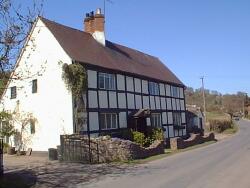
Court Leet is situated opposite All Saints' Church and was used as the local court house with the adjacent cottage being the gaol. Court Leet is a grade 2 listed building.
The Cruck House
The Cruck House is a grade 2 listed building.
Harts Barn
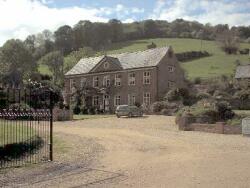
Originally, Harts Barn was built by John (he became known as John le Sergeant because personnal service to the King was "sergeanty" [3]) on lands given to him by William the Conquerer on condition that he provided the King with hounds when he came hunting in the Forest of Dean. William always went hunting at Christmas time [3]. As it stands now, most of Harts Barn was built in the early 18th century but some timber-frame parts (including a staircase) date back to the 17th century.
Knapp House

Knapp House dates back to the some time in the 1400s. As such, it is a grade 2 listed building. It is situated at the bottom of Hopes Hill opposite the site of the Plough Inn. The deeds to the house bare the official stamp of the Duke of Kent recording the house's sale in 1725.
The Latchen Rooms
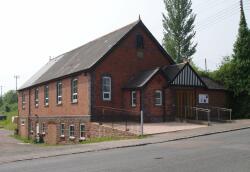
The Latchen Rooms were first built in 1906 [1] and many extensions to enhance the Rooms have been carried out in more recent years. The Rooms were leased to the Trustees by the Parish Council in 1969 [1]. Current plans are in place, with planning permission, for a large extension at the rear. Details can be found here.
The Manor House
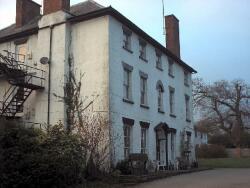
The current Manor House was built in the late 18th century. Up until 1880 it would have been where the Lord of the Manor lived, the last of which was William Roberts M.A. who died in 1880. During the Second World War it was home to evacuees and the Home Guard. By the 1960s it was the Manor House Hotel and hosted all sorts from wedding receptions to comedy clubs. Bob Monkhouse was no stranger to the place.
At the time, the Manor Guest House brochure boasted a first class billiards room, hot and cold water in most bedrooms and a "water supply, which is of the highest quality, is from three wells which have been unaffected even in the most severe droughts" [4]. The tariff was in 1940 was 12s. 6d. a night and was inclusive of a bedroom, back, breakfast, lunch, tea, dinner, light and attendance. One could opt to pay weekly where the tariff was 3 guineas. Bed and breakfast-only facilities were at the reduced rate of 6s. 6d. but the other meals could be taken separately for an additional fee [4].
Now it is a nursing home.
Mutlow Cottage
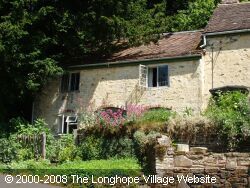
Mutlow Cottage is situated on the foothills of May Hill and dates back to the 18th century. A recent planning application has marked this building for demolition. Mutlow Cottage is a grade 2 listed building.
The Old Forge
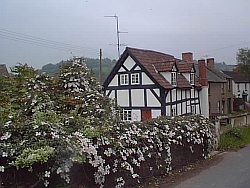
Perhaps one of the most photographed buildings in the village used to be the blacksmith's workshop. It is a grade 2 listed building.
The Old Rectory

The Old Rectory was built on land owned by the church (the glebe) in the early 19th century and it is much larger than the Old Vicarage.
The Old Vicarage
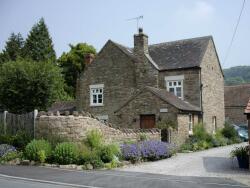
Longhope is unusual in the fact that it had a vicarage as well as a rectory.
Plough Inn
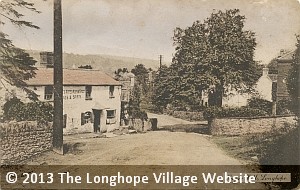
The Plough Inn originally sited opposite Knapp House at the bottom of Hopes Hill was demolished when the bypass was built. The picture is from an old postcard of unknown date. In its day the Plough was a lively place to be and has been described as the Olympics on a Sunday night, where patrons could partake in a game of quoits, shove ha'penny or dominoes. The old inn sign was inscribed on one side with "Before the hill you do get up, stop and take a cheerful cup" and on the other with "Down the hill all danger's past; stop and take a cheerful glass".
The Pound House
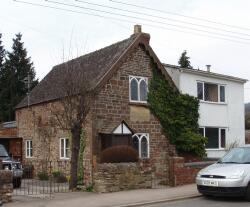
The field opposite the Pound House was known as the Pound and was used to keep animals that were found wandering the village. The Pound House itself caught fire on 19th October 1851 and was rebuilt by the Norwich Union Fire Office in 1852. A commemorative stone was added to mark the rebuilding.
The Temple
Not much is known about The Temple. It is mentioned as being a restaurant in the 1940s after the Second World War.
Tyndale
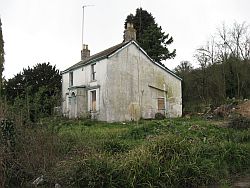
References
- Harper, V., "The Longhope Cook Book", 2007.
- Rudge, T., "The History of the County of Gloucester", G. F. Harries, 1803.
- H. Phelps, "The Forest of Dean", Alan Sutton, 1982.
- Private documents [11].